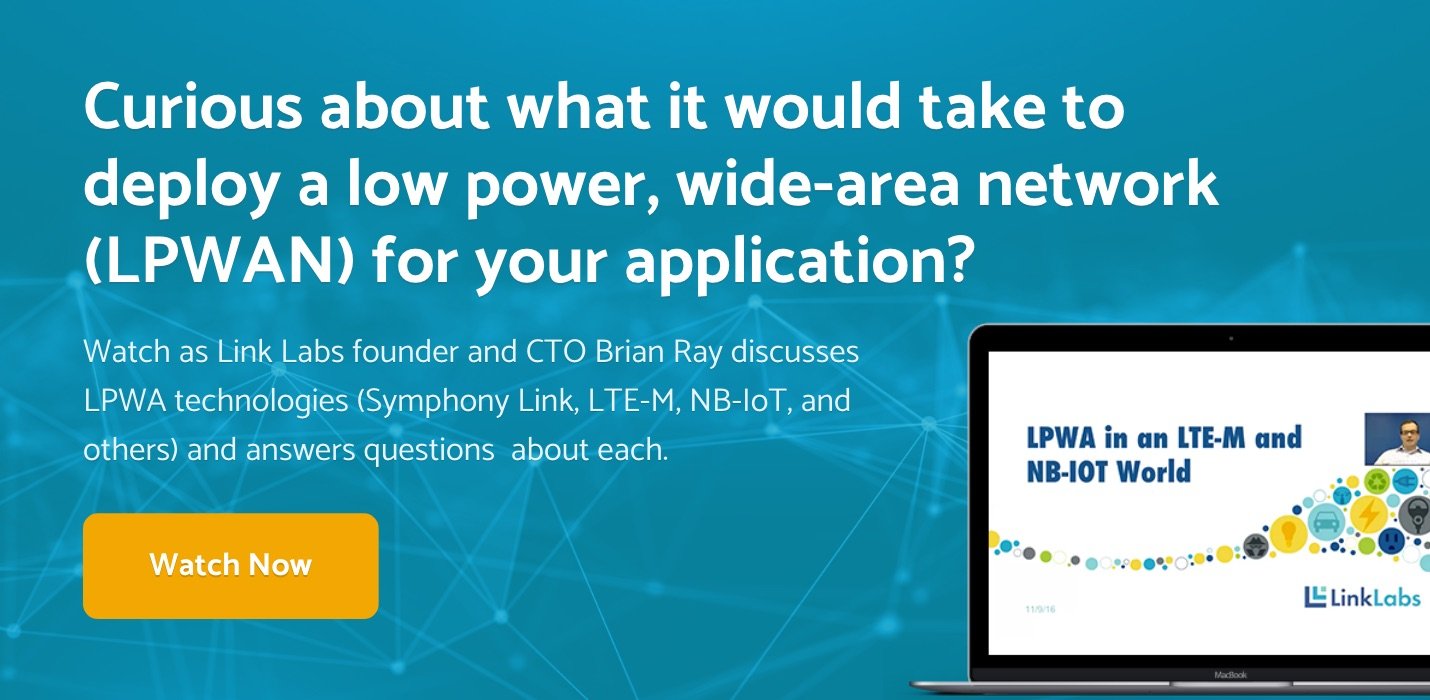Experts predict there will be more than 26 billion devices connecting to the Internet of Things (IoT) by 2020. As exciting as that sounds, the volume of connected devices will also mean an increase in traffic. Some predict that Narrowband IoT will be the best Low Power Wide-Area Network solution (LPWAN) yet. This blog outlines 5 business benefits of this new IoT connectivity opportunity.
What is Narrowband IoT?
Narrowband IoT (also known as NB-IoT or LTE-M2) is a proposed technology which will not operate in the LTE construct. Instead, it is being designed to exist in one of three ways:
- Independently
- In unused 200-KhZ bands that have previously been used for GSM (Global System for Mobile Communications)
- On LTE base stations allocating a resource block to NB-IoT operations or in their guard bands.
Telecommunication giants such as Huawei, Ericsson, Qualcomm, and Vodafone are actively involved in putting this standard together. In fact, Vodafone is set to roll out the first live, commercial NB-IoT launch markets in early 2017 in Germany, Ireland, the Netherlands and Spain.
5 Top Business Benefits of Narrowband IoT
Power Efficiency
Efficiently powering IoT devices is critical. Think about it: who wants to be out there changing the batteries on 20 billion devices every six months? While nearly all IoT technologies are developed to save power when they aren’t operating, they do draw energy when the modem is running and handling signal processing.
Cost Savings
Technologies with simpler waveform—like NB-IoT—will consume less power. A 200 kHz NB-IoT frontend and digitizer offers reduced complexity of analog-to-digital (A/D) and digital-to-analog (D/A) conversion, buffering, and channel estimation. Power savings = cost savings. Plus, NB-IoT chips will be simpler to create and thus come cheaper.
Reliability
Rolling out NB-IoT on a licensed spectrum means improved reliability for users as well as the guaranteed resource allocation needed for managed Quality of Service (QoS).
Wider Deployment
Compared to LTE-M1, the NB-IoT has lower bitrates and better link budgets. Additionally, per Huawei’s Emmanuel Coehlo Alves in an IoT Hub article, the NB-IoT does not need gateways to provide connectivity. Instead of “creating another piece of equipment you need to manage and operate,” he said, the NB-IoT can directly connect sensors to the base station. This can boost flexibility while lowering costs.
Global Reach
While heavy hitters in the U.S. have already invested billions into LTE networks, there are many areas around the world with less LTE. Outside of the U.S., there are larger GSM deployments on which to find unused bands to leverage for NB-IoT. The NB-IoT then could help IoT innovators find affordable entry points in new markets globally.
Even in the U.S., smaller carriers such as Sprint or T-Mobile might also deploy NB-IoT on existing GSM spectrum to expand connectivity without the LTE investment of a Verizon or AT&T.
Foreseeing NB-IoT Applications
NB-IoT applications can cross many service categories. These include:
- Smart metering (electricity, gas and water)
- Facility management services
- Intruder and fire alarms for homes & commercial properties
- Connected personal appliances measuring health parameters
- Person, animal, or object asset tracking
- Smart city infrastructure such as street lamps or dustbins
- Connected industrial appliances such as welding machines or air compressors.
Realistically, there remain some questions about NB-IoT. Deployment could be a problem with most carriers moving to LTE support. With NB-IoT deployed in a side band, there could also be increased initial costs to develop operating software. Further, modem frontends and antennas may become more complex in cases where there is little existing GSM spectrum. Finally, there’s the risk that giants such as Ericsson or Huawei will charge licensing fees for NB-IoT.
Nevertheless, with so much underutilized 200-KhZ GSM spectrum many are looking to make this the best low power, wide-area network yet. It’s no wonder then that Gartner sees NB-IoT as the standard most likely to dominate the LPWAN space in the long-term.
Sources
Huawei. (n.d.). NB-IoT: Enabling New Business Opportunities.
Vodafone. (2016, October 19). Vodafone is First to Announce NB-IoT Launch Markets.





